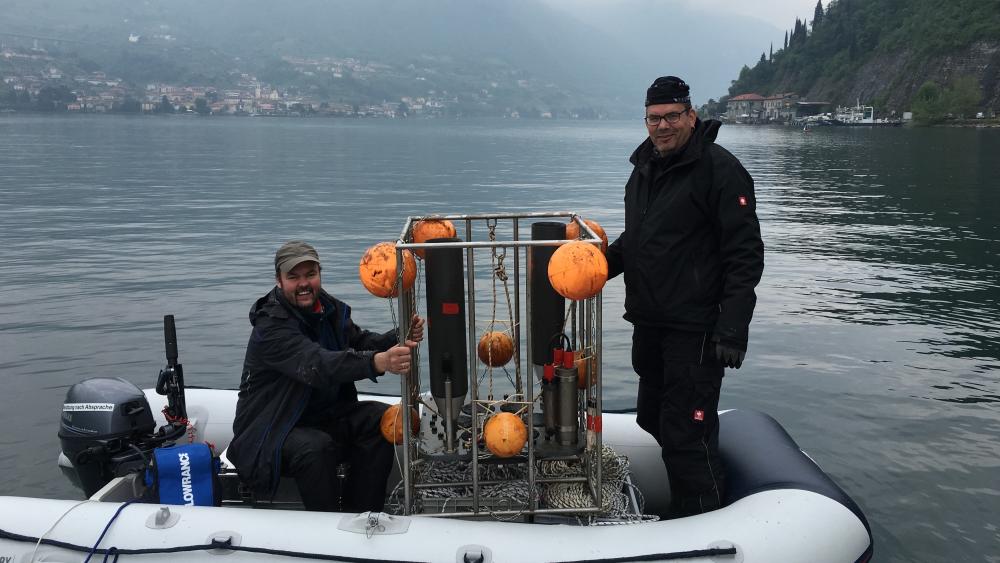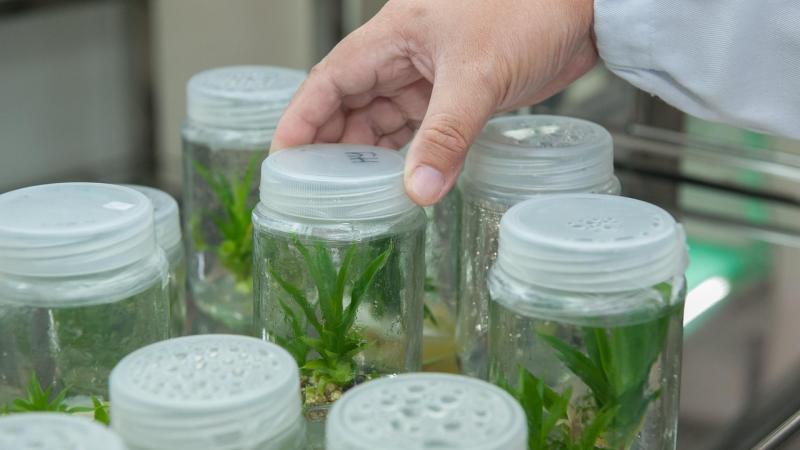
Michael Hupfer and Thomas Rossoll from IGB during field research on Lake Iseo. I Photo: Maximilian Lau
The study area was Lake Iseo in Italy, about 250 meters deep. The researchers found that Lake Iseo forms three layers, of which the deepest water layer, below 90m, hardly ever mixes with the surface.
When lakes warm up, phosphorus accumulation in deep water is enhanced
As around 55 percent of the sedimented phosphorus (P) is released to the water column, it quickly accumulates in the deep water layers. This process is abruptly reversed by deeper mixing and phosphorus is returned to the upper water layers. This promotes the growth of phytoplankton.
The team's estimates based on global databases show that deep lakes can shift towards intermittent meromixis if the warming trend continues. As a result, these lakes could accumulate up to 83 percent of their P load in irregularly circulating water layers, so that this phosphorus is not available for algae growth. However, this phenomenon makes lakes vulnerable to large P pulses into surface water. "If the water circulates completely after a meromixis, large amounts of phosphorus from the deep water can reach the surface in one go. These abrupt fluctuations in nutrient dynamics make the chemical and biological processes in the lake less predictable", explains Maximilian Lau, first author of the study.
"For this reason, an accurate prediction of the stratification regimes in lakes in climate change is indispensable in order to really assess the effects on nutrient dynamics and eutrophication. The study in the northern Italian lake also provides a glimpse into the future of lakes in Germany, since a change in stratification regime will also occur more often in our latitudes," summarises Michael Hupfer.






